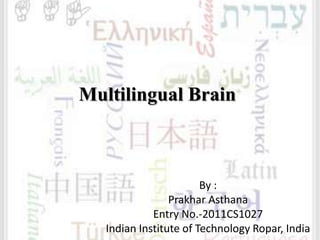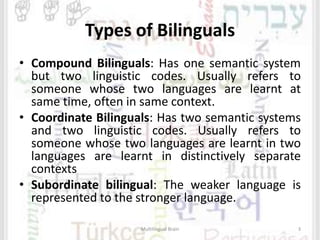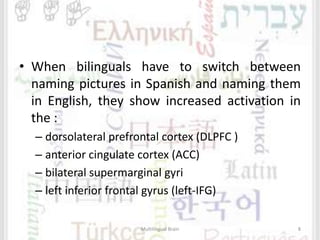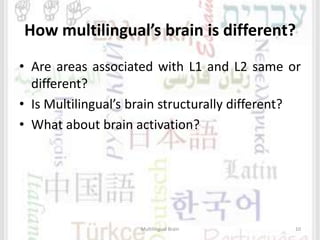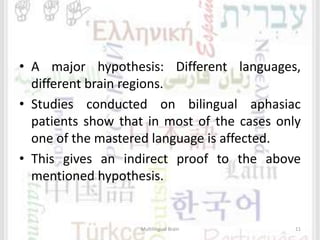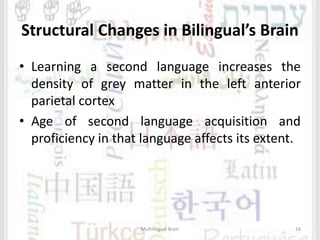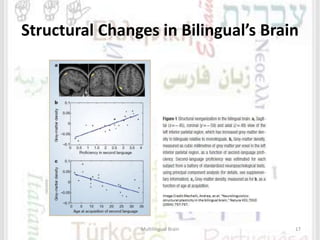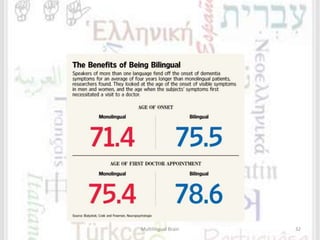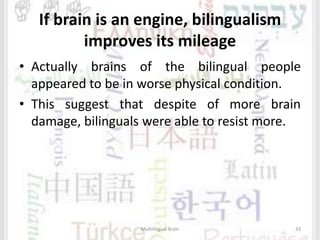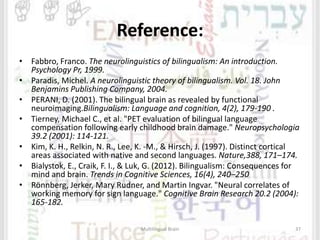1) The document discusses the brain differences between monolingual and multilingual individuals. It describes various types of bilinguals and how their mental lexicons are organized.
2) Research shows that different languages may activate different brain regions, especially for later-acquired languages. Proficiency and age of acquisition also impact brain activation patterns.
3) Being multilingual provides cognitive advantages like improved task switching abilities. It may also delay the onset of Alzheimer's disease. However, multilingual children can have smaller vocabularies in individual languages initially.
